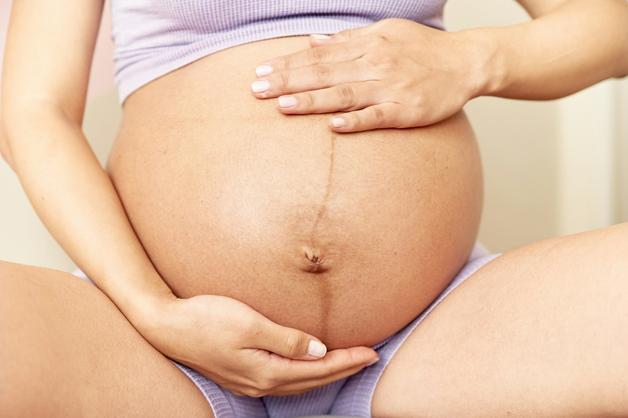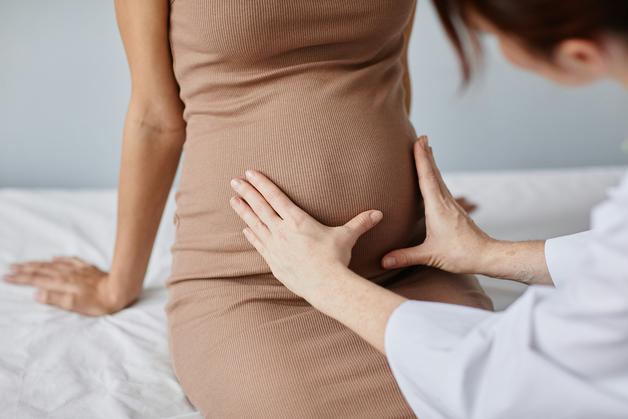A peculiar tightening in the belly, a fleeting hardness, or perhaps a gentle cramping sensation—suddenly, questions arise. Could this be the early signs of labour? Or just another quirky stage of pregnancy? For many Indian parents-to-be, curiosity and concern spark with every new bodily signal. Understanding Braxton Hicks contractions often transforms that fretfulness into reassurance. These episodes, woven seamlessly into late pregnancy, are both perplexing and fascinating. The sensations can be bewildering—sometimes startling in the second trimester, more frequent as the due date approaches. By decoding the nuances of these “practice contractions”, you are better equipped to differentiate between preparation and the real onset, minimising unnecessary hospital visits and reducing stress.
Family life in India thrives on knowledge, tradition, and support. Most parents want to know: When do Braxton Hicks contractions usually begin? Why is the abdomen suddenly feeling so awkward? What actually triggers these mysterious uterine exercises? And most importantly, how can one find relief if discomfort starts interfering with the joys—big or small—of pregnancy? Here, all major aspects get covered using both medical clarity and local sensibility, spanning from telling symptoms to actionable relief methods, guidance on when to contact your gynaecologist, plus answers to those burning everyday questions.
Understanding Braxton Hicks contractions
Picture this: your uterus, an incredibly resilient muscle, practicing for the main act. Braxton Hicks contractions—sometimes locally called as “practice pains”—are intermittent spells of uterine tightening that shuffle gently across the belly. Medical science tells us they were first described by John Braxton Hicks, a 19th-century English doctor, and have since become a byword for “false labour”. Unlike the clockwork precision and intensity of real labour pains, these contractions are often inconsistent and usually painless. Instead, they function like a gentle rehearsal, enhancing elasticity, toning muscular strength, and fine-tuning blood supply to the placenta.
For expecting parents, these sensations can set off alarm bells the first time, often making one question: Is my baby ready to arrive, or is my body just preparing? By grasping the key differences between Braxton Hicks contractions and true labour, you pave the way for a more serene, informed experience—an essential part of postpartum confidence.
When Do Braxton Hicks Contractions Start?
It may surprise many to learn that the uterus begins mild contractions as early as 6 weeks gestation—much before sensation reaches your awareness. For most Indian parents, noticeable Braxton Hicks contractions tend to emerge during the second trimester and intensify by the third trimester. Episodes may feel like the belly tightening up, sometimes causing a brief pause in your daily routine. Initial occurrences are rarely regular, more like playful nudges or gentle cramping across the abdomen. You might feel just a handful in one day, or sometimes as many as 10 to 15 by sunset, especially in busy weeks approaching full term.
What matters is their irregularity. These contractions lack a fixed pattern, striking unpredictably for a few seconds or stretching up to two minutes. As pregnancy progresses, their frequency may increase, yet they retain the hallmark inconsistency that sets them apart from true labour. However, if a regular, intensifying rhythm is noticed, a quick call to your healthcare provider is a wise precaution.
Causes and Triggers of Braxton Hicks contractions
Why does the uterus suddenly decide to “practice” in the middle of a family meal, or while you’re simply relaxing on a Sunday? Doctors note that Braxton Hicks contractions act as the body’s way to tone the uterine muscle—almost like warm-up stretches before a marathon. This process helps increase the cervix’s flexibility, while also supporting optimal placental blood flow, ensuring your baby gets the best possible oxygenation and nourishment.
Several forms of ghar ka stress (domestic stressors)—from dehydration (a very common trigger in India’s hot climate) to physical exertion, a full bladder, sexual activity, or even an active baby’s strong kicks—can initiate these episodes. Sometimes, even gentle abdominal touch or sudden laughter is enough to set things off. Scientific understanding reassures us though: these contractions are not signals to rush to the hospital but rather a confirmation your body is preparing meticulously for childbirth.
Symptoms: What Do Braxton Hicks Contractions Actually Feel Like?
Describing Braxton Hicks contractions sometimes feels like recounting the intangible. Most parents report a sensation best likened to a gentle tightening or hardening across the front of the belly, occasionally echoing mild menstrual cramps. It’s as if a soft cricket ball is pressing outwards under the surface, firming the stomach briefly before releasing. The belly momentarily changes shape or feels slightly lifted, and the discomfort—if present—rarely escalates to genuine pain. Durations are usually short, around 30 seconds, though they may sometimes linger a little longer (even up to two minutes). The lack of rhythmic predictability remains the key diagnostic clue.
How to Distinguish: Braxton Hicks Versus True Labour
One of the biggest sources of confusion for pregnant parents is separating Braxton Hicks contractions from genuine labour pains. How can you know in the midst of uncertainty? Medical clues provide helpful guideposts:
- Braxton Hicks contractions tend to be short-lived, sporadic, and fade quickly after a change in position or a few deep breaths. There’s no trend towards increasing intensity, frequency, or pain.
- True labour contractions tell a distinctly different story. These tend to grow in regularity, duration, and strength—often beginning in the lower back, radiating towards the front—and will not disappear with any positional shift.
- Real labour leads to the cervix dilating and softening (effacement and opening), a process absent in practice contractions.
- If contraction episodes are combined with symptoms like bleeding, fluid leakage (rupture of membranes), or persistently intensifying pain, prompt medical evaluation is necessary.
Simple actions—like lying on your left side or sipping water—often settle Braxton Hicks contractions within minutes, giving added clarity about their benign nature.
Effective Ways to Manage and Soothe Braxton Hicks Contractions
Practical, easily adoptable measures offer relief from the discomfort of Braxton Hicks contractions, helping parents enjoy the final weeks of anticipation instead of dreading each twinge.
- Drinking water: Dehydration, especially during hot Indian weather, is a well-established trigger. Keep a bottle handy and sip often.
- Changing position: If you’ve been on your feet, take a break; if resting, consider a calm stroll—minor shifts can offer major relief.
- Simple relaxation: Embrace slow, deep breaths or gentle prenatal stretches to melt away stress.
- Warm bath or local heat: A soothing bath or a mild heat pack across the belly is comforting, especially after a long day.
- Bladder care: Empty your bladder regularly, since postponing urination can increase sensation of contractions.
Regular routines of walking or practicing mindfulness (even brief yoga-inspired breathing) extend these benefits. In some families, home remedies like a glass of jeera (cumin) water or gentle massage from a partner also help, reflecting the rich tradition of Indian self-care.
If contractions intensify, become regular, or are attended by warning signs (bleeding, fluid loss, severe pain), reaching your healthcare provider is sound advice.
Signals for Immediate Medical Contact
Although Braxton Hicks contractions are nearly always benign, sometimes other signs elbow their way to attention and demand quick consultation:
- Regular, painful contractions before 37 completed weeks—a sign of potential preterm labour
- Vaginal bleeding or noticeable increase in discharge
- Fluid leakage suggesting membranes may have ruptured (water breaking)
- Persistent, severe discomfort that doesn’t resolve even with rest
- Marked reduction in baby movements—less than 10 distinct kicks in 2 hours late in pregnancy
In Indian settings where family opinions may vary, always trust your own instincts and do not delay seeking professional input. Quick action protects both parent and baby when confusion lingers.
Other Causes of Abdominal Pain During Pregnancy
Abdominal pain is not always about Braxton Hicks contractions. Pregnant parents often notice several different causes, and a few are especially common:
- Round ligament pain: Sharp, fleeting twinges on one or both sides of the abdomen, typically triggered by standing up or sudden movement.
- Urinary tract infections (UTIs): Persistent, low abdominal pain, especially if there’s burning urination—a frequent concern in India’s hot climate.
- Digestive Issues: Common in pregnancy—constipation or gas—leading to bloating or mild cramps.
Persistent, severe or escalating pain, especially if associated with fever, fluid loss, or bleeding, always warrants urgent medical evaluation to exclude rare but significant problems like preterm labour or placental complications.
The Role of Braxton Hicks Contractions in Labour Preparation
It might be tempting to dismiss Braxton Hicks contractions as inconsequential. Yet, medical research highlights their importance—they gently strengthen the uterus, condition the cervix, and promote steady blood flow for the growing fetus. These carefully orchestrated practice sessions smoothen childbirth when the time comes by preparing mind and body alike. Over time, parents gain heightened awareness and confidence to spot authentic labour signals, ensuring readiness for whatever the delivery day brings.
Communicating Sensations to Healthcare Providers
Accurate tracking can empower both parent and clinic. Noting time of onset, duration, and specific symptoms (including changes in fetal movements) gives clarity for your doctor while easing parental anxiety. In the multicultural context of Indian families, clear and open conversations bridge the gap between traditional beliefs and modern medicine. Whenever symptoms change or questions arise, do reach out—timely support enhances wellbeing, ensuring a joyful pregnancy experience.
Key Takeaways
- Braxton Hicks contractions are natural, irregular, and do not signal the immediate onset of labour.
- Staying hydrated, practicing rest, and varying activity levels are effective solutions for most mild symptoms.
- Recognising the difference between benign uterine tightenings and genuine labour saves unnecessary visits and reduces anxiety.
- Always contact your healthcare provider for warning signs: persistent pain, bleeding, fluid leakage, or noticeable drop in fetal activity.
- Professional support and trustworthy medical resources make the pregnancy journey smoother—explore options like the application Heloa for health questionnaires and personalised guidance for both parents and children.
Questions Parents Ask
Can Braxton Hicks contractions cause back pain?
Most often, Braxton Hicks contractions feel like a front-abdominal tightening, but mild backache or pelvic discomfort is sometimes reported—especially as posture and body weight shift in late pregnancy. If the ache stays mild and eases with a little rest or change in position, nothing to worry about. But if pain worsens or becomes consistent, best to check in with your doctor.
Is it normal to have frequent Braxton Hicks contractions at 35 weeks?
Absolutely! As you edge closer to full term, many parents in India find Braxton Hicks contractions getting more regular and pronounced. As long as these remain irregular, not painful, and don’t follow a rising pattern, it’s part of the body’s routine. If contractions get steady or stronger, or if any strange symptoms crop up—make a quick call to your healthcare professional.
Where do you usually feel Braxton Hicks contractions?
Typically, the feeling starts in the front part of the abdomen just below the navel or around the pelvic region. Some may feel a gentle pull extending to the lower pelvis, occasionally into the back as well. Tracking exactly when and where the feeling emerges gives helpful details if asked during a check-up.
How long does a Braxton Hicks contraction last?
They usually go on for anything between 30 seconds and up to two minutes—even multiple times a day—but always without growing into a fixed pattern or increasing in strength.
How frequent are Braxton Hicks contractions per day?
It’s not unusual to experience up to 10–15 times per day as pregnancy advances, but there’s no fixed benchmark. Watch only for sudden changes—steady, frequent contractions deserve a quick review with your healthcare team.
Are Braxton Hicks contractions harmful for the baby or the pregnancy?
Not at all! These “practice” tightenings are completely harmless and support your body’s natural preparation for a safe delivery.
Is it possible to never feel Braxton Hicks contractions?
Of course. Some expectant mothers may never notice any such uterine tightening, and this remains within the range of normal. It does not reflect on the health of the parent or baby.
Do these contractions affect baby movements?
Sometimes the baby may wriggle or stretch during these episodes. Unless there is a noticeable drop in the baby’s activity—especially less than 10 kicks in 2 hours in the last weeks—there’s no need for concern.
With the right information and calm, reasoned support, every parent can trust in the wisdom of their own body.
Further reading:









